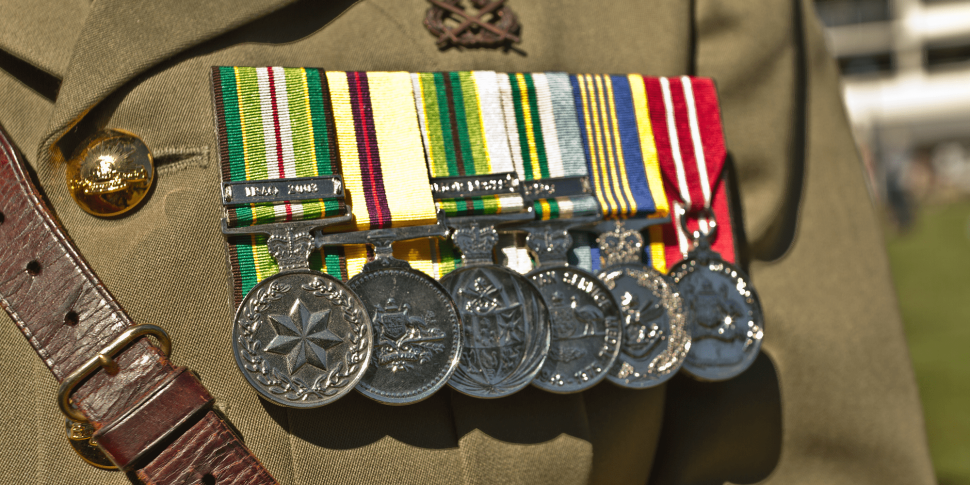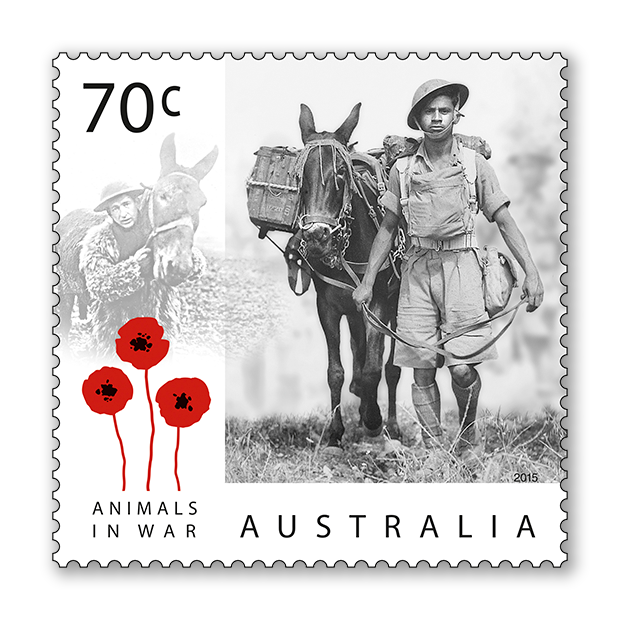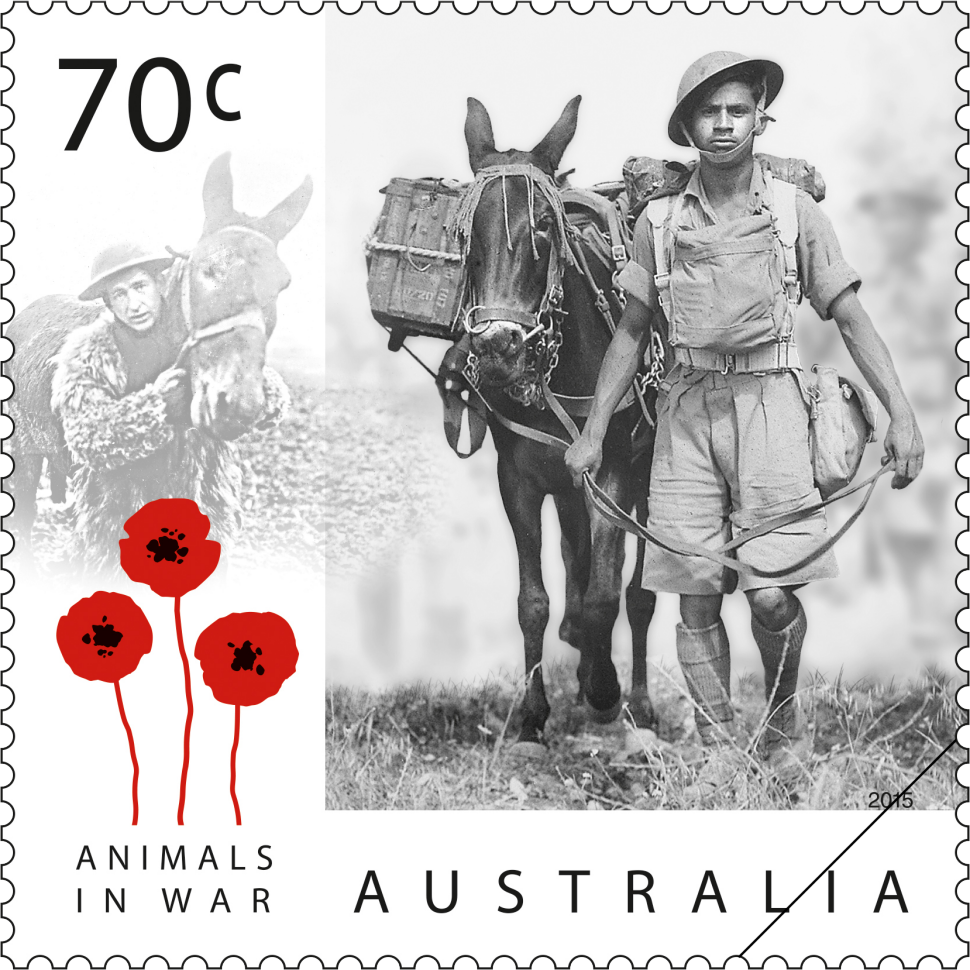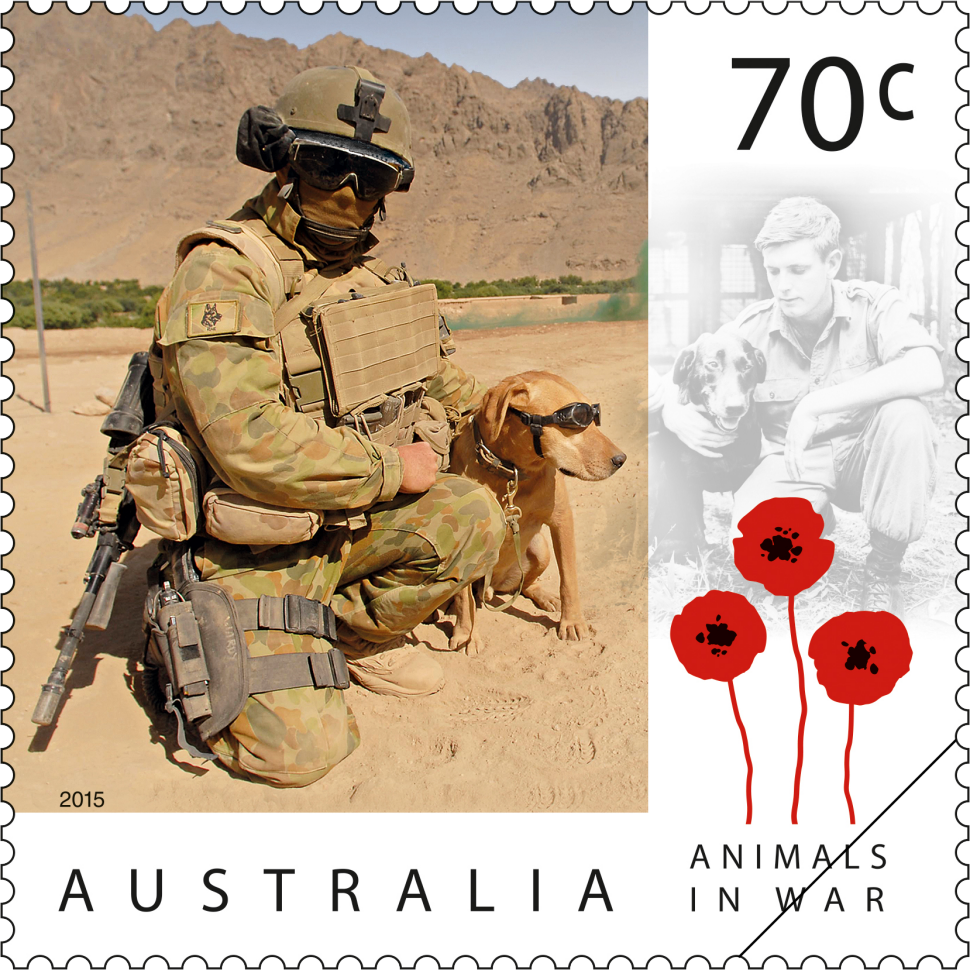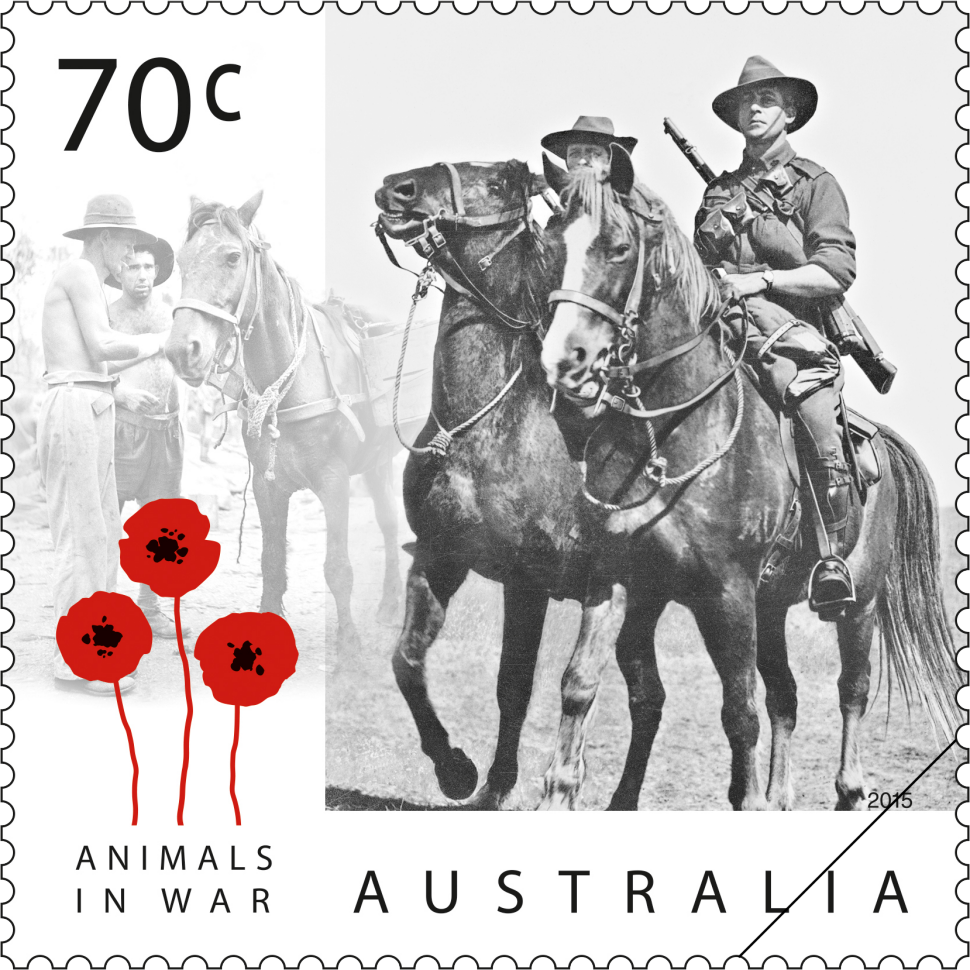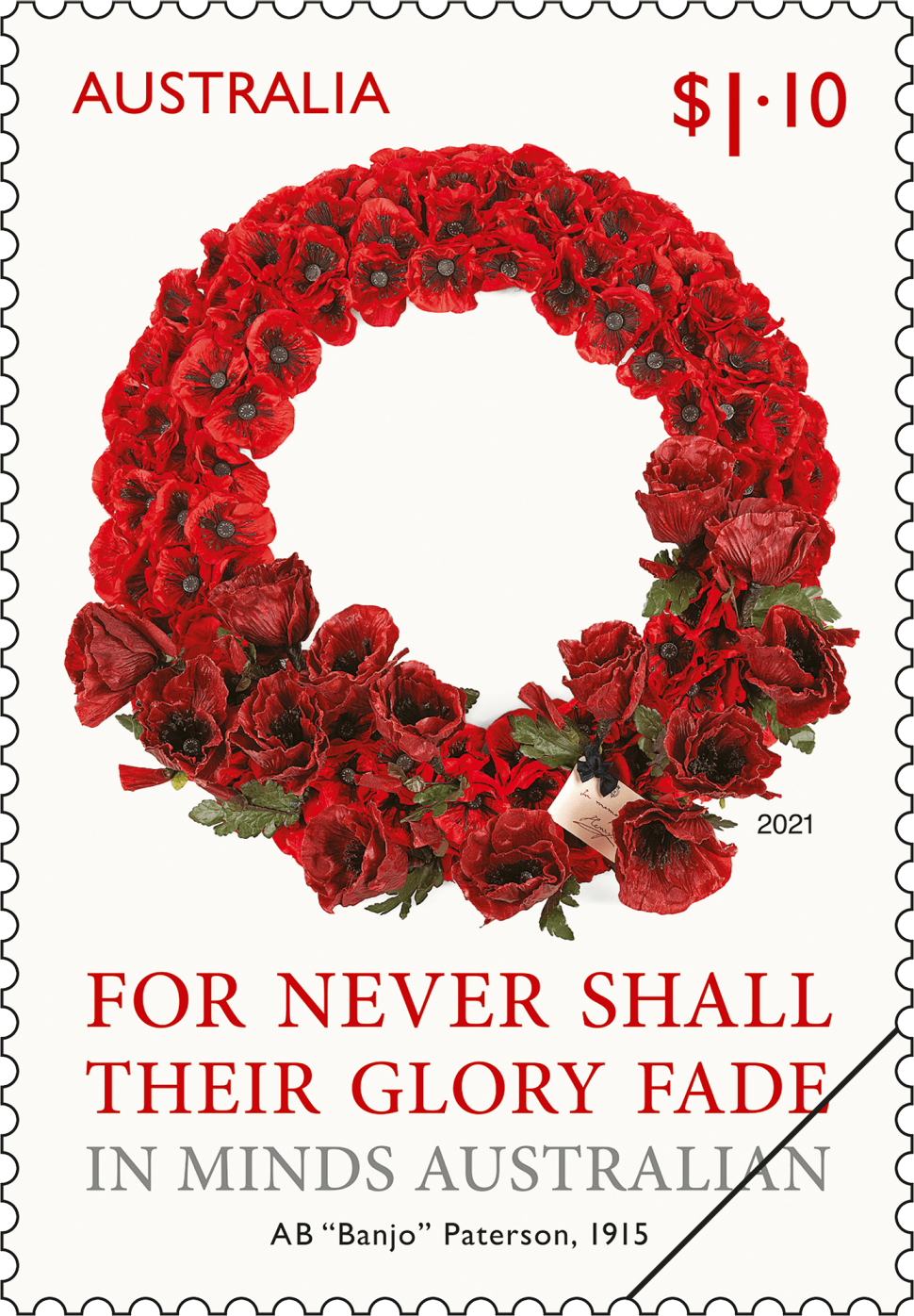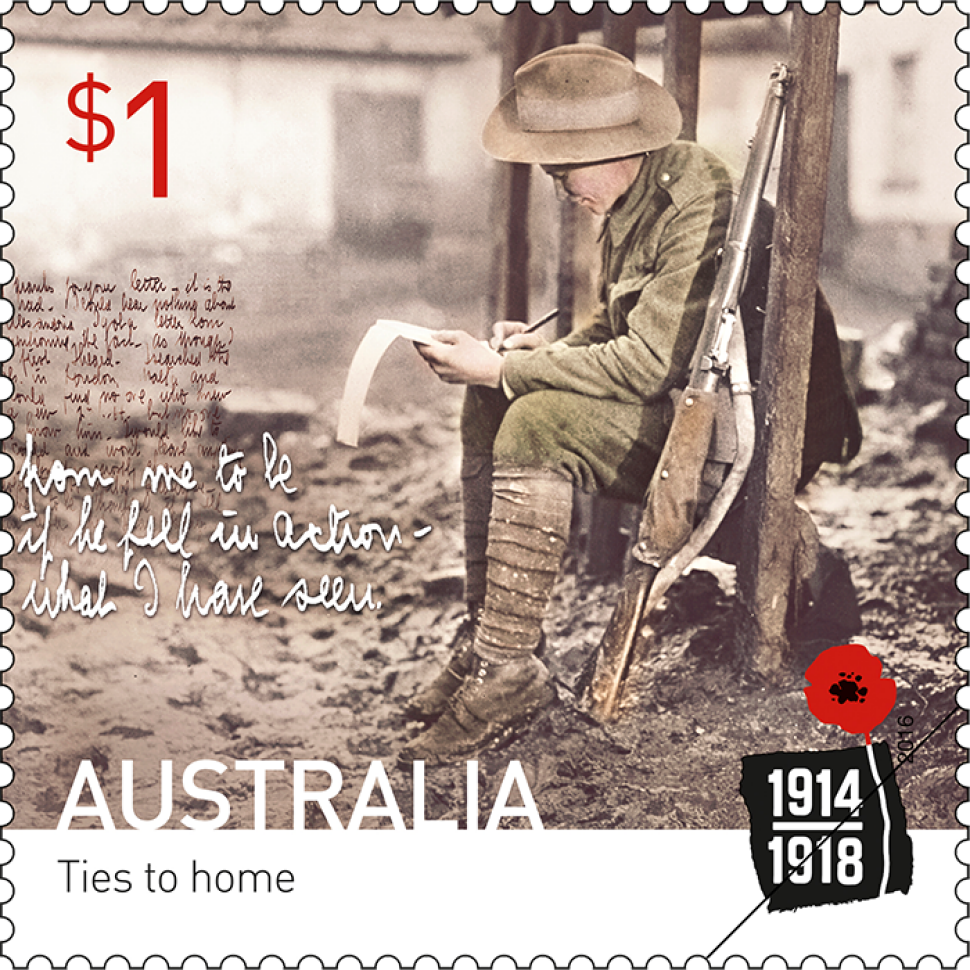In the lead up to Remembrance Day, Australia Post will commemorate the valour and sacrifice made by countless animals during Australia’s involvement in war with the release this new stamp issue.
Australia Post Philatelic Manager, Michael Zsolt said: “For over a century, in times of conflict we have relied on animals for transport, logistics, communications and companionship. This stamp issue is the second in a five-year program of military-themed stamps. We trust all Australians and especially animal lovers will take the time to reflect on the extraordinary animals which have served our nation.”
Designed by Lisa Christensen of the Australia Post Design Studio, the issue comprises five domestic base rate (70c) stamps.
Two special prestige covers are included in this stamp issue. One features Sarbi the dog a female black Labrador/Newfoundland cross, who was deployed as a Special Forces explosive detection dog to Afghanistan as part of the Australian Army’s Operation Slipper.
The first military dog to go missing in action, Sarbi vanished during the battle of Khas Oruzgan in 2008, not to be found until 14 long months later, in the company of an Afghani man. Sarbi received several honours, including the RSPCA Purple Cross Award, the War Dog Operational Medal and the Canine Service Medal. This prestige cover also includes a cloth poppy badge.
The other cover features Simpson and his donkey in a limited edition of 3,500.
Other products include a miniature sheet, first day cover, stamp pack, postcard pack containing six prepaid postcards, postal and numismatic cover (limited edition of 10,500) booklet of 10 x 70 cent self-adhesive stamps, set of five maxicards and five designed gutter strips of 10 x 70 cent stamps.
A Century of Service: Animals in War stamp issue is available from 27 October 2015 online as at participating Post Offices and via mail order on 1800 331 794 while stocks last.
Technical specifications
- Issue date
- 27 October 2015
- Issue withdrawal date
- 30 April 2016
- Denominations
- 5 x 70c
- Stamp design
- Lisa Christensen, Australia Post Design Studio
- Product design
- Lisa Christensen, Australia Post Design Studio
- Printer - gummed
- McKellar Renown
- Paper - gummed
- Tullis Russell
- Paper - self-adhesive
- B100
- Printing process
- Lithography
- Stamp size
- 35mm x 35mm
- Minisheet size
- 170mm x 80mm
- Perforations
- 14.28 x 14.28
- Sheet layout
- Module of 50
- FDI postmark
- Canberra, ACT 2600
- FDI withdrawal date
- 25 November 2015
Mules and donkeys have been vital pack animals in situations of war. The most famous are Simpson’s donkeys, who carried first aid and wounded soldiers during the Gallipoli campaign in World War I.
The featured photograph used in the stamp design shows a mule and soldier of the 26th Australian Infantry Brigade in Syria in 1942. Photograph: Australian War Memorial.
The smaller photograph of a soldier and mule (National Library of Scotland) was taken on the muddy Western Front during World War I.
Dogs have also been indispensable, being used to carry messages, ammunition and medical equipment as well as locate wounded men and enemy soldiers. By sniffing out explosives dogs have saved many lives in Afghanistan, where Improvised Explosive Devices are one of the biggest threat to Australian soldiers.
The featured photograph used in the stamp design was taken in Afghanistan in 2008 and shows a soldier with his explosive ordnance detection dog.
The smaller photograph (Australian War Memorial WAR/69/0863/VN) was taken in Nui Dat, South Vietnam in 1969. The dog, Tiber, sits with his handler Private Bill Palmer of Cobar, NSW, of the 5th Battalion, The Royal Australian Regiment tracker platoon.
Horses were used by mounted troops known as the Australian Light Horse, first serving in the second Boer War (1899–1902). Millions of horses, including thousands sent from Australia, died on the Western Front during World War I.
The Australian-bred horse, the Waler (New South Walers), served during the Indian Mutiny, Boer War and World War I. It was considered to be the finest cavalry horse in the world for its endurance, reliability and hardiness. Of the more than 136,000 Walers sent with Australian troops in World War I, only one, Sandy, was lucky enough to return home. Sandy was the horse of Major General Sir William Bridges, who was killed at Gallipoli.
The featured photograph used in the stamp design was taken in 1914, and shows the original First Light Horse Regiment at Roseberry Park Camp, near Merriwa, NSW, before departure from Australia. Photograph: Australian War Memorial. The trooper on the right is 71 Trooper William Harry Rankin Woods, 1st Light Horse Regiment who was amongst the first Light Horsemen to die of wounds on 15 May 1915 in Gallipoli, aged 39 years.
Pigeons were used by the Allies during both World Wars, although the Australian Corps of Signals Pigeon Service was not established until World War II. Pigeons were extremely useful when communication was very difficult and limited.
Such was the heroism of these little birds that two Dickin Medals – the animals’ VC – were awarded to Australian pigeons. The first was Blue bar cock No. 139:D/D:43:T Detachment 10 Pigeon Section (Type B) attached to Detachment 55 Port Craft Company, whose flight through driving rain to Madang, New Guinea on 12 July 1945, saved the crew and vital cargo of an army boat in danger of foundering during a tropical storm. This intrepid bird covered 64 kilometres in 50 minutes.
The featured photograph used in the stamp design was taken in 1943 and shows a soldier of the 5th Australian Pigeon Section, Advanced Land Headquarters Signals, releasing a pigeon after attaching a message in an aluminium container to its leg. Photograph: Australian War Memorial. The small photograph (Australian War Memorial 085464) was taken in Queensland in 1945 and shows the carrying method used by the 1st Pigeon Company.
Camels served in the Imperial Camel Corps in the Middle East during World War I in their thousands.
The Imperial Camel Corps was founded in January, 1916 to deal with a revolt in Egypt’s Western Desert, and the first four companies were recruited from Australian infantry battalions recuperating after Gallipoli. The Imperial Camel Corps attained its full strength in December that year. Of the four battalions that were eventually formed, the 1st and 3rd were entirely Australian, the 2nd was British, and the 4th was a mix of Australians and New Zealanders. In May 1918 the Imperial Camel Corps was reduced to a single battalion and was formally disbanded in May, 1919, after the end of the war.
Camels were obviously well suited to a desert environment, being hardy and not requiring much water. On average, camels could walk at 4.8 km an hour, or trot at 9.7 km an hour, while carrying a soldier, his equipment and supplies.
The featured photograph used in the stamp design was taken in Egypt during World War I and shows a mounted Light Horseman on a fully equipped camel. Photograph: Australian War Memorial. The smaller photograph (Australian War Memorial B00195), also from World War I, was taken in Palestine in 1918 and shows unidentified Australian members of the Imperial Camel Corps preparing to mount.
This content was produced at the time of the stamp issue release date and will not be updated.
